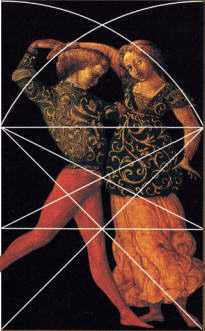English version below!
30 de setembro de 2012 domingo
28 de outubro de 2012 domingo
25 de novembro de 2012 domingo
Destinatários: Público em geral (maiores de 16 anos)
Professor: Maurizio Padovan
Preço por pessoa/dia: 35 €
Preço por pessoa/3 dias: 95 €
Inscrições limitadas
Curso de dança medieval-renascentista
Um curso realizado no cenário da arte da Rota do Românico, para aprender passos e coreografias de Baixas Danças, Bailes e Mouriscas e reviver a atmosfera das festas e dos espetáculos medievais e renascentistas.
Nas cortes dos séculos XIV e XV afirma-se uma experiência coreográfica única e irrepetível na história da dança. O baile da corte, arte nobre e refinada, exprime-se como uma linguagem íntima na procura da medida e do equilíbrio interior. É a dança do Homem do Renascimento, que põe o indivíduo no centro do espaço cénico, reflexo do Universo.
A “Portugalesa”
Nos primórdios do Renascimento a dança representa, por si só, um meio de comunicação independente das rígidas fronteiras políticas. Casamentos, relações diplomáticas e ocupações estrangeiras são veículos pelos quais as linguagens coreográficas se difundem nas cortes europeias, integrando-se nas diversas realidades locais, favorecendo o desenvolvimento de numerosas escolas estilísticas. Não é por acaso que nos primeiros tratados de Arte de Dançar, todos de origem italiana, se encontram danças em estilo francês ou passos de várias nacionalidades como o saltarello tedesco ou a ripresa portugalesa.
Se as relações políticas e económicas entre Itália, França e Alemanha justificam um intercâmbio de modas e costumes, é invulgar o aparecimento de um elemento português no contexto da linguagem coreográfica italiana.
Dever-se-á procurar a razão desta presença na viagem a Itália da princesa Leonor de Portugal, em 1451, por ocasião da sua boda com o imperador Frederico III. Para as comemorações nupciais foram organizados, na cidade de Siena, numerosos bailes oficiais, durante os quais os cortejos alemães e portugueses dançaram com os nobres de Siena, exibindo os seus estilos e repertórios.
Rapidamente assimilada pelos mestres de dança italianos, a sensual, rodopiante e elegante ripresa portugalesa alcançou uma posição ideal nas intelectuais e refinadas baixas danças da segunda metade do século XV: coreografia de uma dança irreal à procura de si mesma, obtida através dos módulos coreográficos essenciais que ainda dão a este antigo repertório uma extraordinária atualidade.
See also http://www.rotadoromanico.com/vPT/Actualidades/Noticias/Paginas/Cursoded...
English version
Medieval-renaissance dance course
In the impressive scenery of a Romanesque monastery learn the steps and choreographies of the Low Dances, Balls and “Mouriscas” (Moorish dances) and re-enact the atmosphere of medieval and Renaissance festivals and shows.
In 14th and 15th century European courts, a unique and unrepeatable choreographic experience intimate language in search of measure and an inner balance. It is the dance of the Renaissance, putting the individual at the center of the stage, and as a reflection of the universe.
The “Portugalesa”
The early Renaissance "Portugalesa" is in itself a means of communication that is independent of political borders. Weddings, diplomatic relations and foreign occupations are vehicles through which choreographic languages spread in European courts, influenced by local habits, favoring the development of numerous stylistic schools. It is not by chance that the first treatises on the Art of Dancing, all of Italian origin, include french-style dances and steps of various nationalities such as the “saltarello tedesco” and the “ripresa portugalesa”.
If political and economic relations between Italy, France and Germany justify an exchange of habits and fashions, the appearance of a Portuguese element in the context of Italian choreographic language must be seen as unusual. The reason for this is to be found in the journey to Italy of Princess Leonor of Portugal, in 1451, on occasion of her marriage to the German emperor, Frederick III. The wedding celebrations in the city of Siena included many official balls during which the German and Portuguese danced with the nobles of Siena, showing their styles and repertoires.
Rapidly assimilated by the Italian dance masters, the sensual, swirling and elegant “ripresa portugalesa” reached an ideal position in the intellectual and refined low dances of the second half of the fifteenth century: this somewhat unreal-looking dance uses essential choreographic modules that make this repertoire still relevant in the present day
